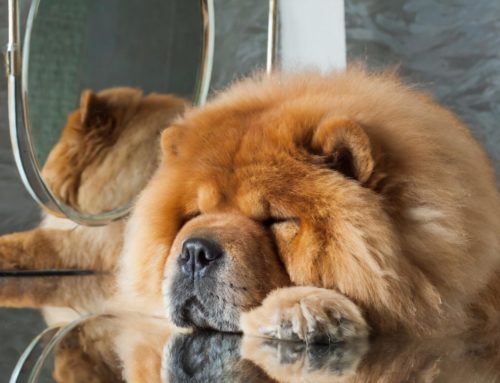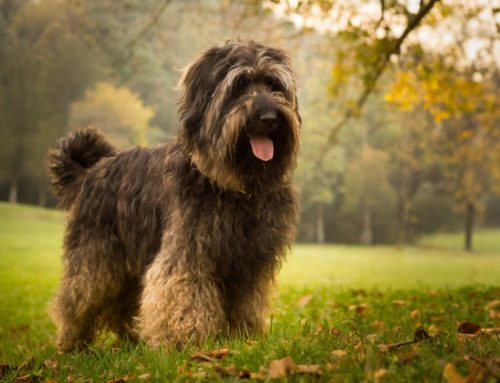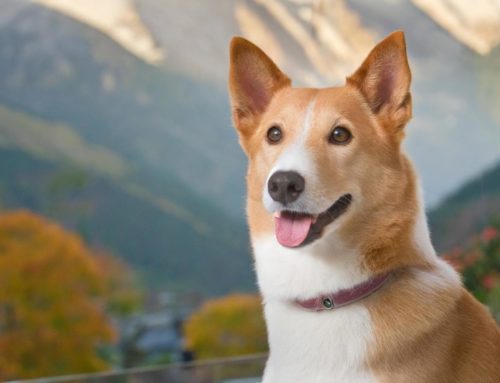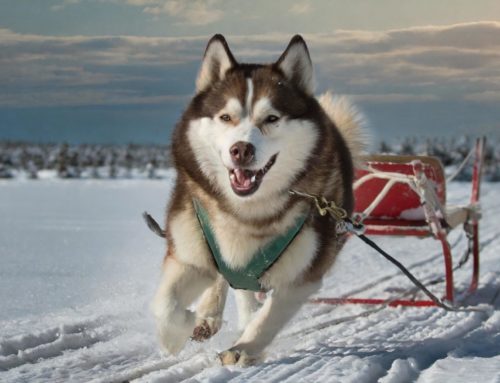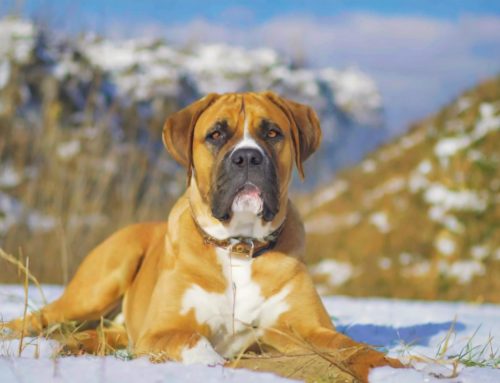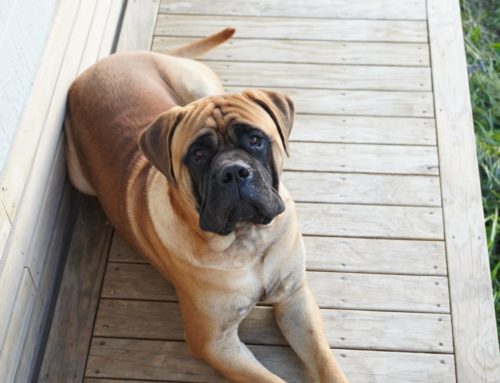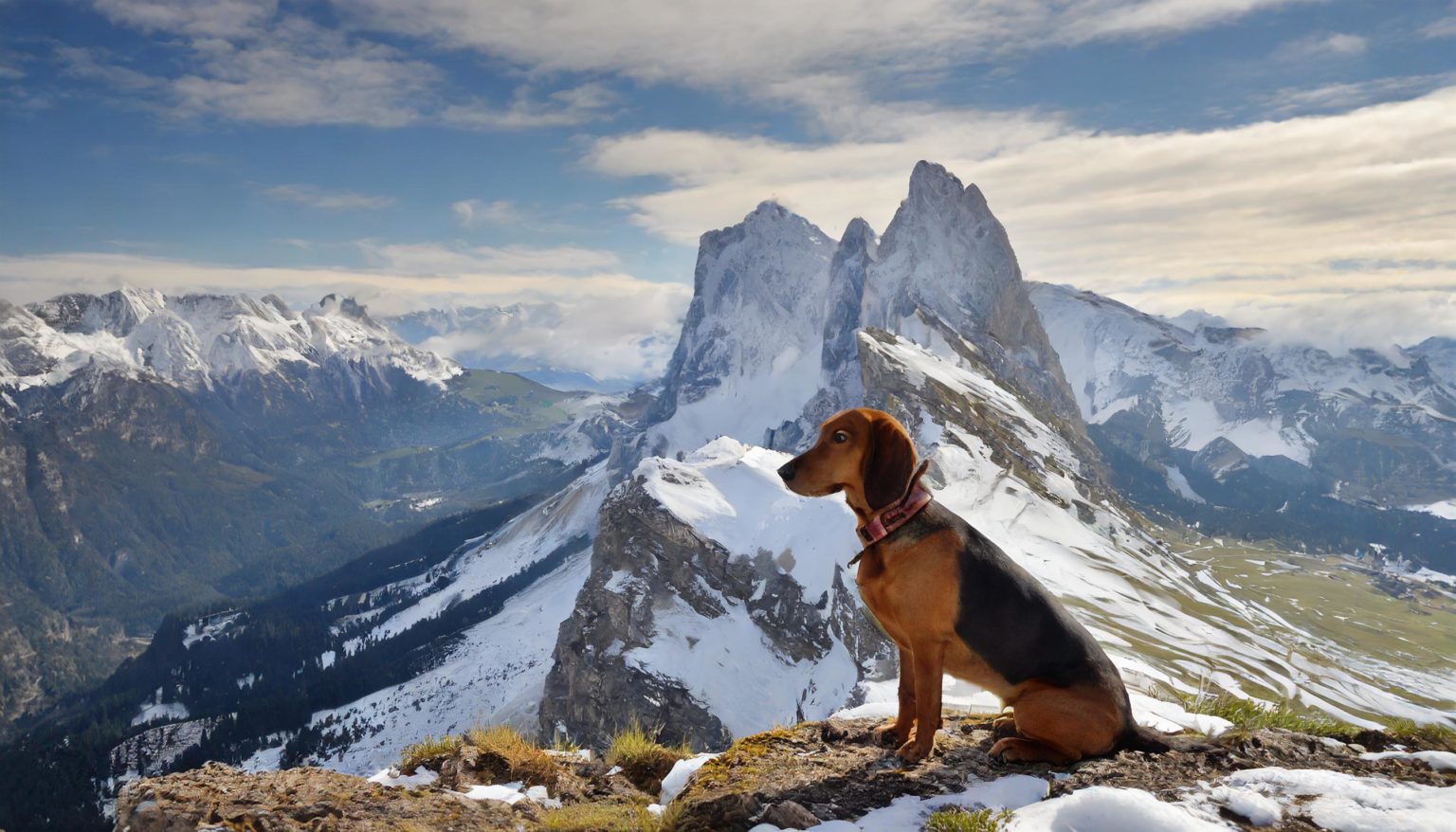
A robust and intelligent hunting dog, the Alpine Dachsbracke has a rich history deeply rooted in the Alpine region. This breed, known for its muscular build and short legs, was bred specifically to hunt wild boar, deer, hare and foxes in the difficult alpine terrain.
With a shoulder height of about 42 cm, they are smaller than many traditional hunting dogs, but what they lack in size, they make up for with their determination and skills as tracking dogs. The Alpenländische Dachsbracke is known as one of the sweat dogs, a term used for dog breeds that specialise in tracking by the smell of game sweat.
These dogs are often used by hunters to track wounded game, thanks to their excellent sense of smell and persistence. Besides their hunting skills, these dogs are known as affectionate and intelligent companions, suitable for any family that can provide them with sufficient mental challenge and exercise.
Their history as running dogs, walking alongside hunters rather than running ahead, has developed them into affectionate dogs that get along well with both people and other dogs.
Over the centuries, these dogs have been prized for their ability to track game such as deer, hares and foxes, even in the harshest alpine environments.
Their depth of chest and robust build, combined with teeth of 42 elements, make them effective hunters.
The ideal coat colour is deer colour alternating with or without black markings, and a black coat with reddish-brown markings on the head, feet and underside of the tail.
The appearance of the Alpine Dachsbracke
A robust and intelligent dog, the Alpenländische Dachsbracke has a distinctive appearance that distinguishes them as excellent hunters, especially of foxes and hares. These dogs have a dense undercoat that protects them in alpine conditions, highlighting their origins as mountain hunters.
Their coat is usually black with distinct red-brown markings, often including a distinctive white patch on the chest, which is allowed within the breed standard. The Alpine Dachsbracke’s ears are set high and droop along their face, which enhances their expressive appearance.
These dogs have a strong and muscular body, which is necessary for their hunting tasks in rough terrain. Their tail is drooping or slightly curved, another characteristic of their breed.
The teeth with 42 elements are powerful and efficient.
Their robust build is further emphasised by a deep chest, which reaches about half their height. These characteristics make the Dachsbracke suitable not only for hunting in mountainous areas, but also as a reliable companion for people and dogs.
Hereditary diseases and disorders
A robust and healthy dog breed, but as with many breeds, there are some hereditary diseases and disorders they can be susceptible to.
Below is a list of some of these conditions:
- Hip dysplasia: A common condition in medium to large dog breeds, in which the hip joint develops abnormally.
- Elbow dysplasia: Similar to hip dysplasia, this involves abnormal development of the elbow joint.
- Patella luxation: A condition in which the kneecap shifts or luxates out of its normal position.
- Eye problems: Includes progressive retinal atrophy and cataracts, which can lead to vision problems and blindness.
- Epilepsy: A neurological disorder that manifests as seizures.
- Skin problems: Allergies and skin infections can occur, often caused by environmental factors or food allergies.
- Dental problems: Dental problems can occur due to overcrowding of teeth, which is especially common in smaller breeds.
The character of the Alpenländische Dachsbracke
The Alpenländische Dachsbracke has a loyal, courageous and determined temperament. They are highly intelligent and have a natural instinct for tracking, which makes them excellent hunting dogs. Their strong sense of smell makes them particularly effective at tracking game, even over rough terrain.
These dogs are also known for their stamina and tenacity, often working in challenging conditions. In addition to their hunting skills, Alpenländische Dachsbrackes are affectionate and friendly companion dogs.
They get along well with family members and are generally friendly towards people. However, their intelligent and alert nature also makes them somewhat independent, which requires consistent training and socialisation.
Despite their medium size, with a shoulder height of between 15 and 20 centimetres, they have a big personality. Their feet and the underside of their tail show the breed’s characteristic colouring, contributing to their attractive appearance.
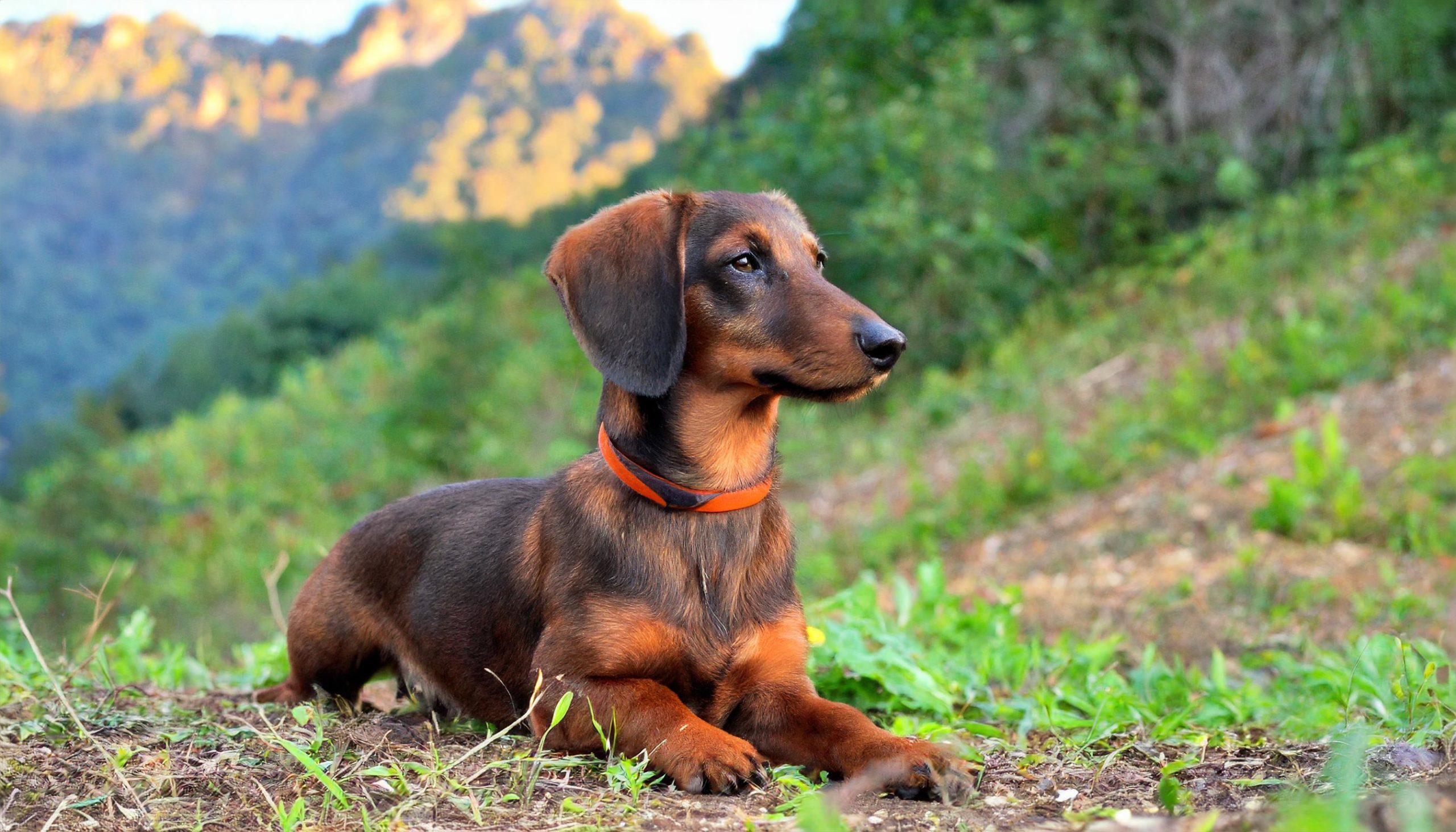
The Care of the Alpenländische Dachsbracke
The care of the Alpenländische Dachsbracke is essential for their well-being and health. This robust and active dog breed requires regular attention to ensure they remain happy and healthy.
- Coat care: The Alpenländische Dachsbracke has a short, dense coat that should be brushed regularly to remove loose hair and keep the skin healthy. They shed seasonally, so more frequent brushing is needed during these periods. Bathing should be done only when necessary to preserve the natural oils in their coat.
- Nail care: Their nails should be trimmed regularly to prevent them from becoming too long, which can cause discomfort and difficulty walking.
- Ear care: The pendant ears of the Alpenländische Dachsbracke should be checked and cleaned regularly to prevent infections.
- Activity: This active breed needs sufficient daily exercise. Long walks, playtime and opportunities to sniff and explore are important to meet their physical and mental needs.
- Nutrition: A balanced diet appropriate to their age, size and activity level is crucial. Avoid overfeeding to avoid obesity, which can cause health problems.
Socialisation and upbringing of the Alpine Dachsbracke
Socialisation and upbringing of the Alpenländische Dachsbracke are crucial for developing a well-adjusted and balanced dog. This intelligent and active breed requires a consistent and positive approach to training, given their strong hunting instinct and independent nature.
Socialisation: Early socialisation is essential for the Alpenländische Dachsbracke. Exposing the dog to different people, sounds, environments and other animals helps develop their social skills and prevents behavioural problems. This can start from an early age and should be done in a positive and gradual way so that the dog learns to deal with different situations without fear or aggression.
Training: These dogs are intelligent and learn quickly, but they can also be stubborn. Consistent, patient and positive reinforcement techniques work best. Harsh or punitive methods should be avoided as they can damage the dog’s confidence.
It is important to teach basic commands such as sit, stay, and come here early. In addition, it is crucial to manage their hunting instinct in a controlled manner.
Mental stimulation: The Alpenländische Dachsbracke needs a lot of mental stimulation because of their intelligent nature. Training games, tracking and puzzle toys can help keep their minds active and engaged.
How much experience does an Alpenländische Dachsbracke require
The Alpenländische Dachsbracke is a breed that requires a certain level of experience and understanding from its owner, given its specific characteristics and needs. As well as being intelligent and active, these dogs have a strong hunting instinct, which can make them stubborn and tenacious at times.
Ideal for experienced owners: The Alpenländische Dachsbracke is best suited to owners who already have experience with dogs, especially working or hunting dogs. Knowledge and experience of training and managing dogs with a strong hunting instinct is a plus.
These dogs require an owner who understands how to deal with their energy, independence and intelligence. Training and Leadership: Effective training requires a patient, consistent and positive approach.
Experience in using these techniques is important to ensure the dog is well socialised and trained. The owner must also show leadership qualities, providing the dog with clear boundaries and guidelines. Time investment: These dogs require adequate exercise and mental stimulation. Owners should be willing to invest time in daily walks, play sessions and training exercises.
Is training necessary?
Training is absolutely necessary for the Alpenländische Dachsbracke, a breed known for its intelligence, energy and strong hunting instinct. These dogs are very active and naturally have a high drive to track and follow, which without proper training can lead to undesirable behaviour such as running away or not listening.
It is important to start training from an early age. Basic obedience training helps build a strong bond between dog and owner and provides clear communication. Commands such as sit, stay, come here and walk without pulling are essential for their daily life and safety.
Their strong hunting instinct requires specific attention during training. They must learn to control their focus and respond to commands even in distracting environments. This is crucial for dogs used for hunting purposes, but also for pets to ensure they are safe and controllable in all situations.
It is also important to provide these dogs with sufficient mental stimulation. Activities such as tracking or agility exercises are ideal for keeping their minds sharp and their bodies active.
How much exercise does an Alpenländische Dachsbracke need?
An energetic and working dog, the Alpenländische Dachsbracke requires a considerable amount of daily exercise to stay healthy and happy. Originally bred for hunting in rugged alpine terrain, these dogs have a natural need for physical activity.
Daily Exercise Requirement: This dog breed needs at least one to two hours of exercise a day. This can include long walks, running, trekking, or playtime in a safely enclosed area. Their stamina and strength make them ideal companions for active outdoor activities.
Mental Stimulation: Besides physical activity, these intelligent dogs also need mental challenges. Training exercises, tracking and intelligence games help keep their minds busy and stimulated.
Adaptation to the Owner: Although they need a lot of exercise, Alpenländische Dachsbrackes can adapt to different lifestyles, as long as their basic needs for exercise and mental stimulation are met. They thrive best with active owners who share their love of the outdoors.

How is it getting along with children?
The Alpenländische Dachsbracke can be an excellent family dog if properly socialised and raised. This breed is known for its loyalty and affection, which can translate into loving interaction with children. However, as with all dog breeds, there are some considerations and guidelines for safe and harmonious interaction.
First, it is important to socialise the Alpenländische Dachsbracke with children from an early age. This helps the dog become comfortable and familiar with their behaviour and energy levels. By building positive experiences, the dog develops a friendly and patient attitude towards children.
Nevertheless, supervision is always necessary when dogs and children are together. Because of their hunting instinct, Alpenländische Dachsbrackes can sometimes be too enthusiastic in their play, especially with smaller children. It is therefore important to teach both dog and children how to interact respectfully and safely.
Advantages of an Alpenländische Dachsbracke
- Loyalty and Attachability: These dogs are known for their loyal and loving nature, especially towards their families.
- Intelligence and Trainability: They are intelligent and relatively easy to train, which makes them suitable for various activities and tasks.
- Stamina and Resilience: As a hunting dog, they have excellent stamina and are well adapted to various weather conditions and terrains.
- Vigilance: They are alert and make good guard dogs, without being overly aggressive.
- Good with Children: Provided they are well socialised, they get along well with children and are a great addition to active families.
Disadvantages of an Alpenländische Dachsbracke
- High Energy Level: They need a lot of exercise and mental stimulation, which can be a challenge for less active owners.
- Strong Hunting instinct: Their hunting instinct can be a challenge, especially in areas with lots of game.
- Independence: Sometimes they can be stubborn, which requires consistent training.
- Need for Companionship: They do not do well alone for long periods of time, which is not ideal for busy households.
- Care: Their coat requires regular grooming, especially during moulting.
How old an Alpenländische Dachsbracke gets
Known for their robustness and resilience, the Alpenländische Dachsbracke has a relatively long lifespan for a medium-sized dog breed. On average, these dogs can live between 10 and 12 years, although some individuals can live even older, depending on various factors such as genetics, lifestyle and healthcare.
Price of an Alpenländische Dachsbracke
The Alpine Dachsbracke, known in its native Austria as the Alpenländische Dachsbracke, is a breed seldom found, even within its homeland. This makes locating one in the US and determining a potential price quite the endeavor. Here’s an overview:
Price: It’s challenging to establish a specific price range for the Alpine Dachsbracke in the US due to their scarcity. If a breeder were found, the cost could likely exceed $2,000 due to their rare status.
Finding an Alpine Dachsbracke:
- Breeders: Active breeders specializing in this breed may not exist in the US.
- Rescue: The chance of discovering an Alpine Dachsbracke through US rescue organizations is very slim, attributed to their rarity.
Alternatives to Consider:
For those attracted to the Alpine Dachsbracke’s compact size and resemblance to dachshunds, the following breeds present in the US might appeal:
- Standard Dachshund: Available in smooth, wirehaired, and longhaired coat types, with prices usually between $800 and $2,000.
- Miniature Dachshund: A diminutive variant of the Standard Dachshund, offering the same coat variations, typically priced from $800 to $2,000.
- Feist: A small, versatile hunting dog with a rich American heritage. While not AKC-recognized, Feists are accessible through shelters or rescues at significantly lower adoption fees.
Important Considerations:
- Adoption: Exploring shelters or rescue organizations for a Dachshund or akin small breed could be rewarding. Adoption offers a chance to provide a loving home to numerous deserving dogs at a fraction of the cost.
- Mixed Breeds: Mixed breed dogs offer companionship comparable to purebreds, often with reduced health risks linked to specific breed genetics. They are abundantly available in shelters and rescues.
Additional Tips:
Attempting to connect with breed-specific clubs in Austria for information on potential breeders willing to export to the US could be an option, albeit with expected obstacles and significant import costs.
Remember: Selecting the right dog breed is crucial. Given the Alpine Dachsbracke’s rarity, thoroughly evaluating other breeds that offer similar traits but with greater availability may be more practical for meeting your lifestyle needs.
